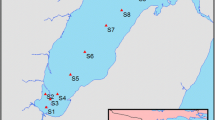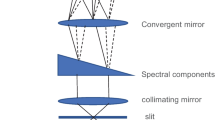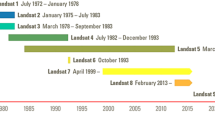Abstract
Conventional water quality measurements are nearly impossible during and immediately after extreme storms due to dangerous conditions. In this study, remotely sensed reflectance is used to develop a regression equation that quantifies total suspended solids (TSS) in near real-time after Hurricane Harvey. The application focused specifically on sediment loading and deposition and its potential impacts on the Houston Ship Channel and Galveston Bay riverine-estuarine system. The European Space Agency’s Sentinel-2 satellite captured images at critical points in the storm’s progression, necessitating the development of a new algorithm for this relatively new satellite mission. Several linear regressions were analyzed with the goal of developing a simple one- or two-band equation, and the final model uses the red and near infrared bands (R2 = 0.74). Results show that record flows during Harvey delivered unprecedented suspended sediment loads to the Gulf of Mexico at concentrations above 125 mg/L with a mean concentration of 43 mg/L across the bay. The study findings demonstrated that it took up to 11 days after the storm for sediment transport to abate.







Similar content being viewed by others
References
Adams, C., Witt, E. C., Wang, J., Shaver, D. K., Summers, D., Filali-Meknassi, Y., Shi, H., Luna, R., & Anderson, N. (2007). Chemical quality of depositional sediments and associated soils in New Orleans and the Louisiana Peninsula following Hurricane Katrina. Environmental Science & Technology, 41(10), 3437–3443. https://doi.org/10.1021/es0620991.
Amaral-Zettler, L. A., Rocca, J. D., Lamontagne, M. G., Dennett, M. R., & Gast, R. J. (2008). Changes in microbial community structure in the wake of Hurricanes Katrina and Rita. Environmental Science & Technology, 42(24), 9072–9078. https://doi.org/10.1021/es801904z.
Beaver, J. R., Casamatta, D. A., East, T. L., Havens, K. E., Rodusky, A. J., James, R. T., Tausz, C. E., & Buccier, K. M. (2013). Extreme weather events influence the phytoplankton community structure in a large lowland subtropical lake (Lake Okeechobee, Florida, USA). Hydrobiologia, 709(1), 213–226. https://doi.org/10.1007/s10750-013-1451-7.
Brando, V. E., & Dekker, A. G. (2003). Satellite hyperspectral remote sensing for estimating estuarine and coastal water quality. IEEE Transactions on Geoscience and Remote Sensing, 41(6), 1378–1387.
Caballero, I., Morris, E. P., Ruiz, J., & Navarro, G. (2014). Assessment of suspended solids in the Guadalquivir estuary using new DEIMOS-1 medium spatial resolution imagery. Remote Sensing of Environment, 146, 148–158. https://doi.org/10.1016/j.rse.2013.08.047.
Candiani, G., Floricioiu, D., Giardino, C., & Rott, H. (2005). Monitoring water quality of the Perialpine Italian Lake Garda through multi-temporal MERIS data (Vol. 597, p. 27). European Space Agency, (Special Publication) ESA SP.
Chen, Y., Cebrian, J., Lehrter, J., Christiaen, B., Stutes, J., & Goff, J. (2017). Storms do not alter long-term watershed development influences on coastal water quality. Marine Pollution Bulletin, 122(1–2), 207–216. https://doi.org/10.1016/j.marpolbul.2017.06.038.
Curran, P. J., & Novo, E. (1988). The relationship between suspended sediment concentration and remotely sensed spectral radiance—a review.
D’Sa, E. J., Miller, R. L., & McKee, B. A. (2007). Suspended particulate matter dynamics in coastal waters from ocean color: application to the northern Gulf of Mexico. Geophysical Research Letters, 34(23). https://doi.org/10.1029/2007GL031192.
Du, J., Park, K., Dellapenna, T. M., & Clay, J. M. (2019). Dramatic hydrodynamic and sedimentary responses in Galveston Bay and adjacent inner shelf to Hurricane Harvey. Science of the Total Environment, 653, 554–564. https://doi.org/10.1016/J.SCITOTENV.2018.10.403.
ESA. (2017). Sen2Cor: third party plugins for Science Toolbox Exploitation Platform (STEP). http://step.esa.int/main/third-party-plugins-2/sen2cor/sen2cor_v2-8/. Accessed 20 Oct 2017.
Filippino, K. C., Egerton, T. A., Hunley, W. S., & Mulholland, M. R. (2017). The influence of storms on water quality and phytoplankton dynamics in the tidal James River. Estuaries and Coasts, 40(1), 80–94. https://doi.org/10.1007/s12237-016-0145-6.
Gitelson, A., Garbuzov, G., Szilagyi, F., Mittenzwey, K. H., Karnieli, A., & Kaiser, A. (1993). Quantitative remote sensing methods for real-time monitoring of inland waters quality. International Journal of Remote Sensing, 14, 1269–1295. https://doi.org/10.1080/01431169308953956.
Gong, W., Shen, J., & Reay, W. G. (2007). The hydrodynamic response of the York River estuary to Tropical Cyclone Isabel, 2003. Estuarine, Coastal and Shelf Science, 73(3), 695–710. https://doi.org/10.1016/j.ecss.2007.03.012.
Greening, H., Doering, P., & Corbett, C. (2006). Hurricane impacts on coastal ecosystems. Estuaries and Coasts, 29(6), 877–879 http://www.jstor.org/stable/4124816.
Griffiths, W. H., & Walton, B. D. (1978). The effects of sedimentation on the aquatic biota. Alberta, Canada. https://era.library.ualberta.ca/items/412c8c58-f2aa-41f3-87b7-a112b02a74f1. Accessed 20 Oct 2017
Gurlin, D., Gitelson, A. A., & Moses, W. J. (2011). Remote estimation of chl-a concentration in turbid productive waters—return to a simple two-band NIR-red model? Remote Sensing of Environment, 115(12), 3479–3490. https://doi.org/10.1016/j.rse.2011.08.011.
Hagy, J. D., Lehrter, J. C., & Murrell, M. C. (2006). Effects of Hurricane Ivan on water quality in Pensacola Bay, Florida. Estuaries and Coasts, 29(6A), 919–925. https://doi.org/10.1007/BF02798651.
Hamidi, S. A., Hosseiny, H., Ekhtari, N., & Khazaei, B. (2017). Using MODIS remote sensing data for mapping the spatio-temporal variability of water quality and river turbid plume. Journal of Coastal Conservation, 21(6), 939–950. https://doi.org/10.1007/s11852-017-0564-y.
Huang, W., Mukherjee, D., & Chen, S. (2011). Assessment of Hurricane Ivan impact on chlorophyll-a in Pensacola Bay by MODIS 250m remote sensing. Marine Pollution Bulletin, 62(3), 490–498. https://doi.org/10.1016/j.marpolbul.2010.12.010.
Huang, W., Hagen, S., & Bacopoulos, P. (2013). Hydrodynamic modeling of Hurricane Dennis impact on estuarine salinity variation in Apalachicola Bay. Journal of Coastal Research, 30(2), 389–398. https://doi.org/10.2112/JCOASTRES-D-13-00022.1.
Jha, M., & B. Swietlik. (2003). Ecological and toxicological effects of suspended and bedded sediments on aquatic habitats—a concise review for developing water quality criteria for Suspended and Bedded Sediments (SABS).
Kiaghadi, A. S., & Rifai, H. (2019). Chemical, and microbial quality of floodwaters in Houston following Hurricane Harvey. Environmental Science & Technology, 53(9), 4832–4840. https://doi.org/10.1021/acs.est.9b00792.
Lee, Z., Carder, K. L., & Arnone, R. A. (2002). Deriving inherent optical properties from water color: a multiband quasi-analytical algorithm for optically deep waters. Applied Optics, 41(27), 5755–5772. https://doi.org/10.1364/ao.41.005755.
Mallin, M. A., & Corbett, C. A. (2006). How hurricane attributes determine the extent of environmental effects: multiple hurricanes and different coastal systems. Estuaries and Coasts, 29(6), 1046–1061. https://doi.org/10.1007/BF02798667.
Matthews, M. W. (2011). A current review of empirical procedures of remote sensing in inland and near-coastal transitional waters. International Journal of Remote Sensing, 32(21), 6855–6899. https://doi.org/10.1080/01431161.2010.512947.
Mertes, L. A. K., Smith, M. O., & Adams, J. B. (1993). Estimating suspended sediment concentrations in surface waters of the Amazon River wetlands from Landsat images. Remote Sensing of Environment, 43, 281–301. https://doi.org/10.1016/0034-4257(93)90071-5.
Morel, A., & Prieur, L. (1977). Analysis of variations in ocean color. Limnology and Oceanography, 22(4), 709–722 http://www.jstor.org/stable/2835253.
Mouw, C. B., Greb, S., Aurin, D., DiGiacomo, P. M., Lee, Z., Twardowski, M., Binding, C., Hu, C., Ma, R., Moore, T., Moses, W., & Craig, S. E. (2015). Aquatic color radiometry remote sensing of coastal and inland waters: challenges and recommendations for future satellite missions. Remote Sensing of Environment, 160, 15–30. https://doi.org/10.1016/j.rse.2015.02.001.
Nechad, B., Ruddick, K. G., & Park, Y. (2010). Calibration and validation of a generic multisensor algorithm for mapping of total suspended matter in turbid waters. Remote Sensing of Environment, 114(4), 854–866. https://doi.org/10.1016/j.rse.2009.11.022.
Pahlevan, N., Sarkar, S., Franz, B. A., Balasubramanian, S. V., & He, J. (2017). Sentinel-2 MultiSpectral Instrument (MSI) data processing for aquatic science applications: demonstrations and validations. Remote Sensing of Environment, 201, 47–56. https://doi.org/10.1016/j.rse.2017.08.033.
Pardue, J. H., Moe, W. M., McInnis, D., Thibodeaux, L. J., Valsaraj, K. T., Maciasz, E., van Heerden, I., Korevec, N., & Yuan, Q. Z. (2005). Chemical and microbiological parameters in New Orleans floodwater following hurricane Katrina. Environmental Science and Technology, 39(22), 8591–8599. https://doi.org/10.1021/es0518631.
Reisinger, A., Gibeaut, J. C., & Tissot, P. E. (2017). Estuarine suspended sediment dynamics: observations derived from over a decade of satellite data. Frontiers in Marine Science https://www.frontiersin.org/article/10.3389/fmars.2017.00233. Accessed 20 Oct 2017.
Ritchie, J. C., Zimba, P. V., & Everitt, J. H. (2003). Remote sensing techniques to assess water quality. Photogrammetric Engineering and Remote Sensing, 69(6), 695–704. https://doi.org/10.14358/PERS.69.6.695.
Romanok, K. M., Szabo, Z., Reilly, T. J., Defne, Z., & Ganju, N. K. (2016). Sediment chemistry and toxicity in Barnegat Bay, New Jersey: pre- and post-Hurricane Sandy, 2012-13. Marine Pollution Bulletin, 107(2), 472–488. https://doi.org/10.1016/j.marpolbul.2016.04.018.
Rossi, L., Chèvre, N., Fankhauser, R., Margot, J., Curdy, R., Babut, M., & Barry, D. A. (2013). Sediment contamination assessment in urban areas based on total suspended solids. Water Research, 47(1), 339–350. https://doi.org/10.1016/j.watres.2012.10.011.
Sakuno, Y., Miño, E. R., Nakai, S., Mutsuda, H., Okuda, T., Nishijima, W., Castro, R., García, A., Peña, R., Rodríguez, M., & Depratt, G. C. (2014). Chlorophyll and suspended sediment mapping to the Caribbean Sea from rivers in the capital city of the Dominican Republic using ALOS AVNIR-2 data. Environmental Monitoring and Assessment, 186(7), 4181–4193. https://doi.org/10.1007/s10661-014-3689-6.
Sikorska, A. E., Del Giudice, D., Banasik, K., & Rieckermann, J. (2015). The value of streamflow data in improving TSS predictions—Bayesian multi-objective calibration. Journal of Hydrology, 530, 241–254. https://doi.org/10.1016/j.jhydrol.2015.09.051.
Smith, K. A., & Caffrey, J. M. (2009). The effects of human activities and extreme meteorological events on sediment nitrogen dynamics in an urban estuary, Escambia Bay, Florida, USA. Hydrobiologia, 627(1), 67–85. https://doi.org/10.1007/s10750-009-9716-x.
Smith, L. M., Macauley, J. M., Harwell, L. C., & Chancy, C. A. (2009). Water quality in the near coastal waters of the Gulf of Mexico affected by Hurricane Katrina: before and after the storm. Environmental Management, 44(1), 149–162. https://doi.org/10.1007/s00267-009-9300-1.
TCEQ. (2018). Texas clean rivers program data tool, https://www80.tceq.texas.gov/SwqmisWeb/public/crpweb.faces. Accessed 10 March 2018. Texas Commission on Environmental Quality.
Tyler, A. N., Hunter, P. D., Spyrakos, E., Groom, S., Constantinescu, A. M., & Kitchen, J. (2016). Developments in Earth observation for the assessment and monitoring of inland, transitional, coastal and shelf-sea waters. Science of the Total Environment, 572, 1307–1321. https://doi.org/10.1016/j.scitotenv.2016.01.020.
Warren, C., Duzgoren-Aydin, N. S., Weston, J., & Willett, K. L. (2012). Trace element concentrations in surface estuarine and marine sediments along the Mississippi Gulf Coast following Hurricane Katrina. Environmental Monitoring and Assessment, 184(2), 1107–1119. https://doi.org/10.1007/s10661-011-2025-7.
Werdell, J., & Bailey, S. (2005). An improved bio-optical data set for ocean color algorithm development and satellite data product variation. Remote Sensing of Environment, 98, 122–140. https://doi.org/10.1016/j.rse.2005.07.001.
Wetz, M. S., & Yoskowitz, D. W. (2013). An ‘extreme’ future for estuaries? Effects of extreme climatic events on estuarine water quality and ecology. Marine Pollution Bulletin, 69(1), 7–18. https://doi.org/10.1016/j.marpolbul.2013.01.020.
Zheng, Z., Yulong, G., Yifan, X., Liu, G., & Du, C. (2015). Landsat-based long-term monitoring of total suspended matter concentration pattern change in the wet season for Dongting Lake, China. Remote Sensing, 7(10), 13975–13999. https://doi.org/10.3390/rs71013975.
Acknowledgments
Maria Modelska is acknowledged for providing valuable comments on the manuscript.
Funding
The Houston Endowment, the Texas Commission on Environmental Quality, the US-EPA, the National Science Foundation (NSF) Rapid Award #1759440, and the Hurricane Resilience Research Institute (HuRRI) provided funding for the study.
Author information
Authors and Affiliations
Corresponding author
Additional information
Publisher’s note
Springer Nature remains neutral with regard to jurisdictional claims in published maps and institutional affiliations.
Rights and permissions
About this article
Cite this article
Sobel, R.S., Kiaghadi, A. & Rifai, H.S. Modeling water quality impacts from hurricanes and extreme weather events in urban coastal systems using Sentinel-2 spectral data. Environ Monit Assess 192, 307 (2020). https://doi.org/10.1007/s10661-020-08291-5
Received:
Accepted:
Published:
DOI: https://doi.org/10.1007/s10661-020-08291-5




